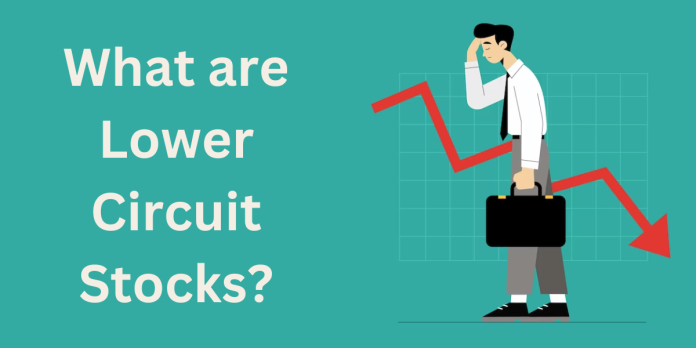Have you ever been caught in a lower circuit, or if not, you must have heard about it when a stock hits the lower circuit on a specific day, and there are only sellers with no buyers ready to purchase the stock?
Everyone enjoys it when a share hits the upper circuit, some stocks have a 20% limit, while others have 10% or 5%. It is obviously a joyful moment when you buy a stock, and the next day or from that point on, the stock hits the upper circuit limit of 20%, giving you a 20% gain. Not bad, is it? Especially when banks offer only a 5% to 7% return on FDs for a year. Conversely, if that stock hits the lower circuit and consistently remains in the lower circuit, it will indeed become a nightmare for you.
In this article, we are going to explore the lower circuit and how to exit when a stock is in a lower circuit. We’ll also provide tips on how to protect yourself from getting trapped in it.
Lower Circuit:
A lower circuit is a mechanism in the stock market that aims to prevent a stock’s price from dropping too rapidly. It sets a predefined percentage below the current price as the lowest level at which the stock can be traded during a single trading session. When a stock’s price reaches this lower circuit, trading essentially “freezes” for that stock because there are no new buyers willing to step in and purchase at that reduced price.
At this point, only sellers remain in the market, but no further sell orders are allowed because the lower circuit is designed to curb excessive selling. However, buy orders can still be executed without any restrictions because the primary purpose of the lower circuit is to limit further declines in the stock’s price, not to inhibit buying activity. It’s a protective mechanism to stabilize the market during periods of extreme volatility or panic selling.
Why do stocks hit lower circuits?
Stocks can decline for various reasons, such as broader market or industry sell-offs, negative news like key management departures or deal disruptions, large investors withdrawing funds, block deals by institutions, or even manipulative actions by certain players.
Who sets the circuit limit?
The lower circuit for stocks varies, typically ranging from 2% to 20%. It’s determined by SEBI, considering factors like trading volume, liquidity, and stock category. These circuit levels are subject to periodic review and can be adjusted. Liquidity-rich stocks may have higher circuit limits, while stocks with low liquidity may have lower circuit limits.
Can you sell the stock locked in the lower circuit?
You cannot sell a stock locked in the lower circuit because no buyers are available at that price. The stock remains frozen at the lower circuit until fresh buyers appear. The stock remains locked in the lower circuit until a fresh buyer steps in. Intraday traders face a problem because they must close their positions by the end of the trading day. If a stock is locked in the lower circuit, its intraday positions convert to delivery. They need to maintain a sufficient account balance to take delivery by the next trading session; otherwise, the broker will sell the stocks for the shortfall.
To exit a stock stuck in the lower circuit, the best option is to place a limit order near the last traded price. If the stock experiences fresh buying during the remainder of the trading session, your order may get executed. However, there’s no guarantee of this, and if no buyers emerge by the market’s closing time, your order will be canceled.
Tips to save yourself from getting trapped:
To prevent being unable to sell your holdings when a stock is in the lower circuit, you can employ a straightforward market practice: set strategic stop losses. By placing stop losses above the lower circuit price, you can ensure that you exit your positions before the stock reaches the lower limit.
For instance, if you purchased shares of Company X at Rs 100, and the lower circuit is at Rs 80, you can place a stop loss at a price higher than Rs 88, such as Rs 89 or Rs 90. This way, your order will get executed, helping you avoid getting trapped in the lower circuit. Some brokers offer the GTT (Good till Trigger) option, which functions as a one-time stop-loss order for your investments. Investors can use this feature and put a stop loss at a price higher than the limit price.
Conclusion:
A lower circuit, established by SEBI, prevents steep stock price drops during a trading session. When a stock hits the lower circuit, selling halts because there are no buyers. Experiencing a lower circuit is not necessarily a sign of fundamental issues with the company. It’s typically a one-day sell-off, and buyers often return in subsequent trading sessions. A lower circuit doesn’t erase a stock’s past performance.
Disclaimer: This blog has been written exclusively for educational purposes. The securities mentioned are only examples and not recommendations. It is based on several secondary sources on the internet and is subject to changes. Please consult an expert before making related decisions.


